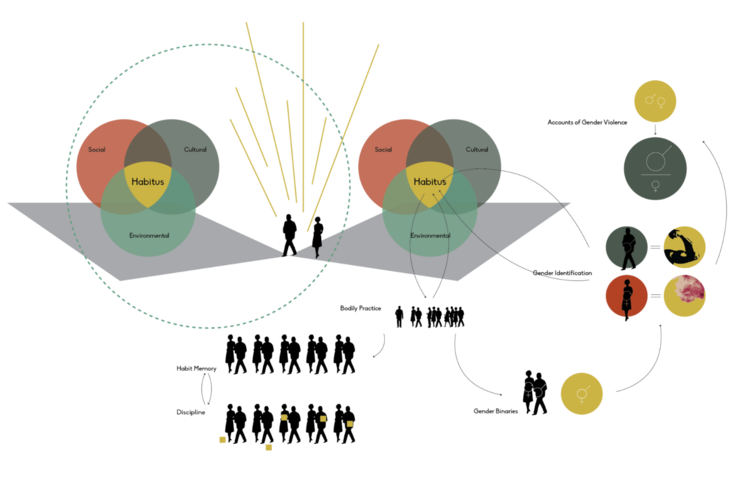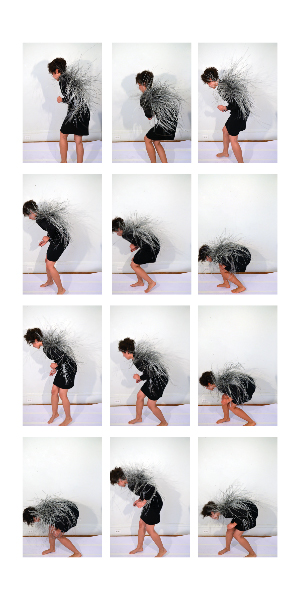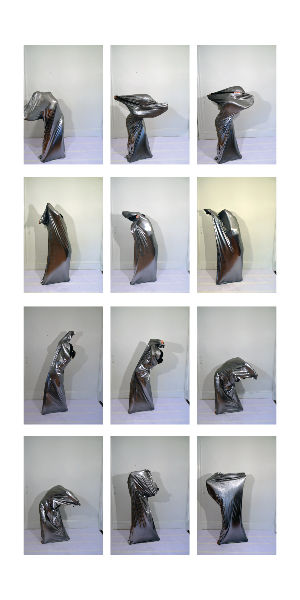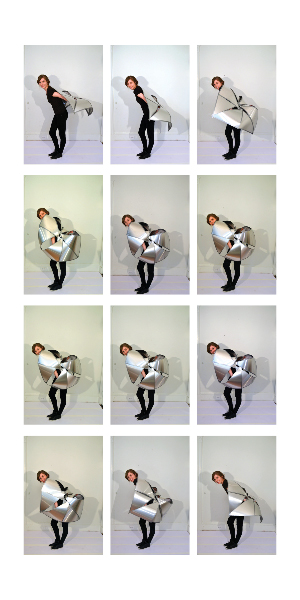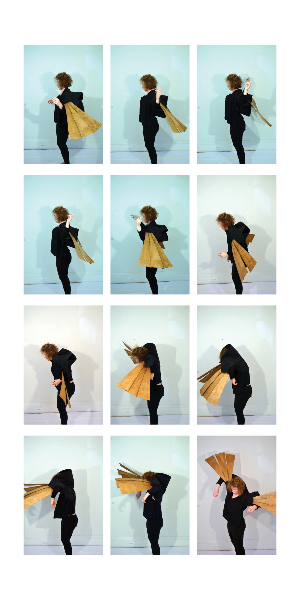Public Spaces, Private Lives: Encoding Environments to Incite Civil Courtesies
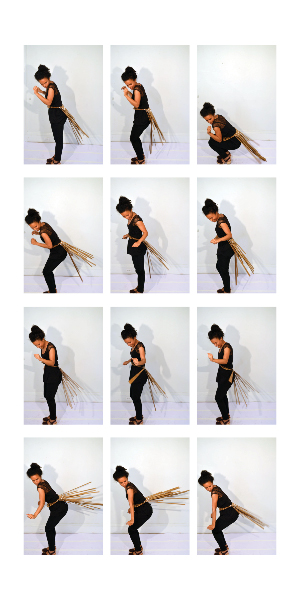
by Jen Krava (MDes ’15)
This project investigates the issue of violence against women and what society values as acceptable behavior in public space. It is tasked to create new bodily practices and gender performance, reclaim personal spaces within the public, and shift public social etiquettes. This is done through the consideration of the body as a site of cause and resistance of these acts, and provides the grounds to dissect an act of harassment into stages on which to intervene.
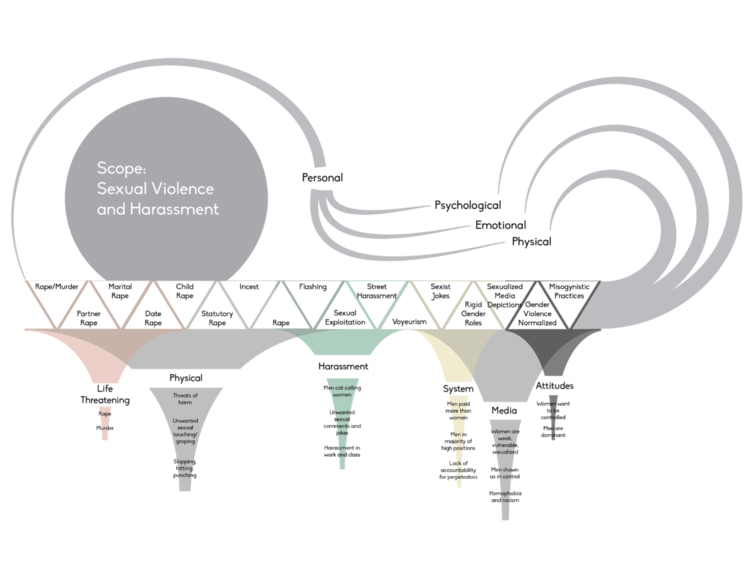 This is done through a holistic system that is tasked with inculcating social and cultural change by exposing existent bystander networks encoded within the environment before, during, and after an act of personal harassment. These staged interventions can operate individually or as a collective. Conceptual garments act before an instance occurs, a mobile application acts while the instance is occurring, and mapping of existent social services acts after the instance has occurred. These staged interventions place pressure on the public to question normalized acceptance of sexual harassment and violence, as well as how we judge and categorize personal identification, but I will focus on the garments, as they directly create new bodily practices and gender performance. Information about the other two stages can be seen on the boards.
This is done through a holistic system that is tasked with inculcating social and cultural change by exposing existent bystander networks encoded within the environment before, during, and after an act of personal harassment. These staged interventions can operate individually or as a collective. Conceptual garments act before an instance occurs, a mobile application acts while the instance is occurring, and mapping of existent social services acts after the instance has occurred. These staged interventions place pressure on the public to question normalized acceptance of sexual harassment and violence, as well as how we judge and categorize personal identification, but I will focus on the garments, as they directly create new bodily practices and gender performance. Information about the other two stages can be seen on the boards.

Not only do these garments function before an act of sexual violence occurs, but they also call upon the body as the source of cultural change by invoking much needed discourse about personal space within the public. Instances of street and sexual harassment have become normalized within our culture – they are embedded as part of the every day. Because of how often these instances occur, and the social understanding that they aren’t directly harmful acts, men and women develop tactics to avoid these happenings in their daily lives, just as animals have defense systems that aid them in surviving attacks from predators. These wearables superimpose the qualities of the animal defense systems onto the human body.
